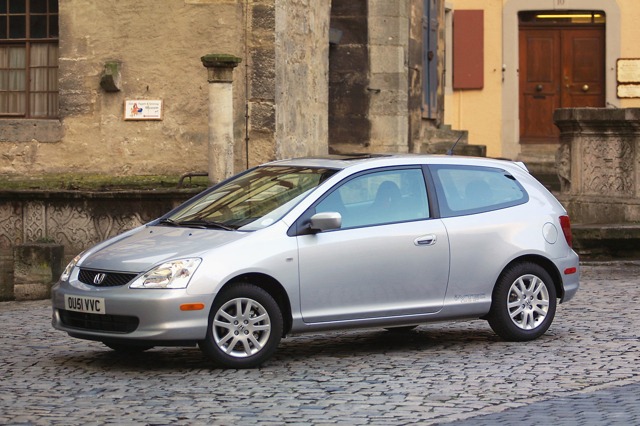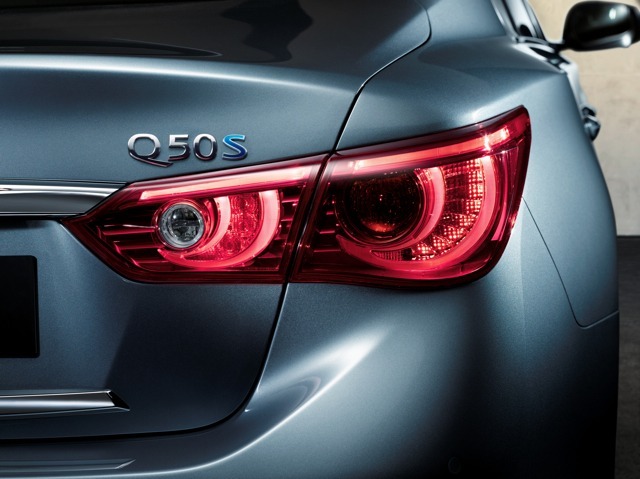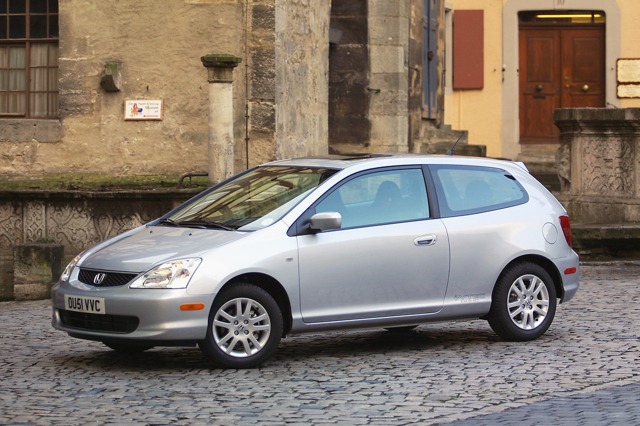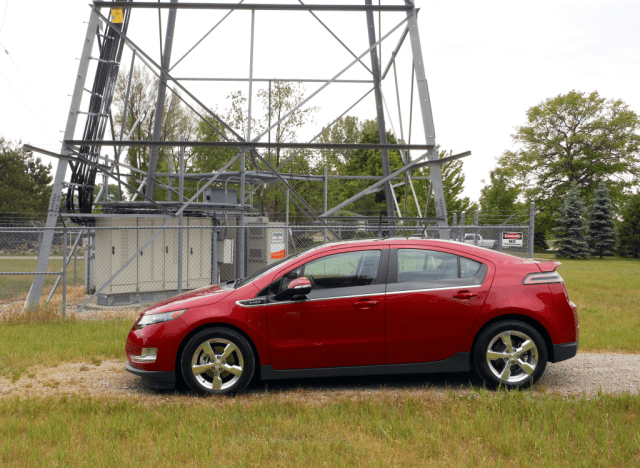Search the Community
Showing results for tags 'Vehicle'.
-

Average Age Of A Vehicle Stands At 11.4 Years
William Maley posted an article in Automotive Industry
A new report from IHS Automotive says the average age of a vehicle on the road stands at 11.4 years, the same age as last year. This is change from the past few years where the age was climbing steadily. "In our history of tracking, we have seen a gradual increase in the average age of vehicles on the road. This year, we're seeing somewhat of a plateau in the market, and expect it to remain over the next few years, without a major change in either direction. We attribute this to a number of factors, including the economy and the increasing quality of today's automobiles," said Mark Seng, director, aftermarket solutions and global aftermarket practice leader at IHS Automotive. But IHS is predicting that the average age will creep up to 11.5 year by 2017, and up to 11.7 by 2019. IHS also reports that at the end of 2013, there were 252.7 million light vehicles operating U.S. roads. This is up by 3.7 million vehicles when compared to 2012. Source: IHS Automotive Press Release is on Page 2 Average Age of Vehicles on the Road Remains Steady at 11.4 years, According to IHS Automotive U.S. Vehicles in Operation (VIO) Hits Record Levels at More than 252 Million; Scrappage Rate Declines Significantly SOUTHFIELD, Mich.--(BUSINESS WIRE)--The combined average age of all light vehicles on the road in the U.S. remained steady at 11.4 years, based on a snapshot of vehicles in operation taken Jan. 1 of this year, according to IHS Automotive, which incorporated Polk into its business last year. Total light vehicles in Operation (VIO) in the U.S. also reached a record level of more than 252,700,000 -- an increase of more than 3.7 million (1.5 percent) since last year, said the IHS Automotive analysis from July 2013. In addition, new vehicle registrations outpaced scrappage by more than 24 percent for the first time in a decade, according to the analysis. The average age is in line with the trend shift first seen in 2013, in which the combined fleet of cars and light trucks on the road is older than ever. New analysis, however, indicates the average age of light trucks has increased in the past year to the same age as passenger cars, both at 11.4 years. This milestone marks the first time this has happened since 1995, when the data was first reported. “In our history of tracking, we have seen a gradual increase in the average age of vehicles on the road,” said Mark Seng, director, aftermarket solutions and global aftermarket practice leader at IHS Automotive. “This year, we’re seeing somewhat of a plateau in the market, and expect it to remain over the next few years, without a major change in either direction. We attribute this to a number of factors, including the economy and the increasing quality of today’s automobiles.” Looking ahead, IHS forecasts that average age of vehicles is likely to remain at 11.4 years through 2015, then rise to 11.5 years by 2017 and 11.7 years by 2019. This rate of growth is slowing as compared to the last five years due to the substantial increase in new vehicle sales. Scrappage Rates Decline amid VIO Growth The number of vehicles scrapped in 2013 was significantly fewer than in previous years, with just over 11.5 million vehicles scrapped during the 12-month timeframe analyzed by IHS Automotive. In comparison, a record high of more than 14 million vehicles were scrapped in 2012. This while VIO is up 1.5 percent, a rate the auto industry hasn’t seen in the U.S. since 2004-2005. Dynamics of Fleet Age and Mix With the shift in ownership comes shift in the age of vehicles within segments of the overall fleet, which is important to business planners in the aftermarket and service industries so they can manage inventories of parts required and plan for sales and service activity accordingly. Based on the growth of new vehicle registrations in the past few years as the U.S. auto industry has rebounded, IHS Automotive forecasts that the volume of vehicles 0-5 years old will increase by 32 percent over the next five years while vehicles in the 6-11 year old category will decline by 21 percent. Because of improved quality and consumers holding their cars and light trucks longer, vehicles 12-plus years old continue to grow and will increase by 15 percent by 2019. The IHS Automotive aftermarket team is working with customers in all areas of the aftermarket to help them best identify opportunities and specific planning efforts that may help improve their business. Likewise, business planning opportunities are under way at the OEMs to help them identify additional sales opportunities as vehicles are taken out of service and newer vehicle are coming into the U.S. vehicle fleet.- 14 comments
-
- Average Age
- Number of Vehicles Operating
-
(and 3 more)
Tagged with:
-
A new report from IHS Automotive says the average age of a vehicle on the road stands at 11.4 years, the same age as last year. This is change from the past few years where the age was climbing steadily. "In our history of tracking, we have seen a gradual increase in the average age of vehicles on the road. This year, we're seeing somewhat of a plateau in the market, and expect it to remain over the next few years, without a major change in either direction. We attribute this to a number of factors, including the economy and the increasing quality of today's automobiles," said Mark Seng, director, aftermarket solutions and global aftermarket practice leader at IHS Automotive. But IHS is predicting that the average age will creep up to 11.5 year by 2017, and up to 11.7 by 2019. IHS also reports that at the end of 2013, there were 252.7 million light vehicles operating U.S. roads. This is up by 3.7 million vehicles when compared to 2012. Source: IHS Automotive Press Release is on Page 2 Average Age of Vehicles on the Road Remains Steady at 11.4 years, According to IHS Automotive U.S. Vehicles in Operation (VIO) Hits Record Levels at More than 252 Million; Scrappage Rate Declines Significantly SOUTHFIELD, Mich.--(BUSINESS WIRE)--The combined average age of all light vehicles on the road in the U.S. remained steady at 11.4 years, based on a snapshot of vehicles in operation taken Jan. 1 of this year, according to IHS Automotive, which incorporated Polk into its business last year. Total light vehicles in Operation (VIO) in the U.S. also reached a record level of more than 252,700,000 -- an increase of more than 3.7 million (1.5 percent) since last year, said the IHS Automotive analysis from July 2013. In addition, new vehicle registrations outpaced scrappage by more than 24 percent for the first time in a decade, according to the analysis. The average age is in line with the trend shift first seen in 2013, in which the combined fleet of cars and light trucks on the road is older than ever. New analysis, however, indicates the average age of light trucks has increased in the past year to the same age as passenger cars, both at 11.4 years. This milestone marks the first time this has happened since 1995, when the data was first reported. “In our history of tracking, we have seen a gradual increase in the average age of vehicles on the road,” said Mark Seng, director, aftermarket solutions and global aftermarket practice leader at IHS Automotive. “This year, we’re seeing somewhat of a plateau in the market, and expect it to remain over the next few years, without a major change in either direction. We attribute this to a number of factors, including the economy and the increasing quality of today’s automobiles.” Looking ahead, IHS forecasts that average age of vehicles is likely to remain at 11.4 years through 2015, then rise to 11.5 years by 2017 and 11.7 years by 2019. This rate of growth is slowing as compared to the last five years due to the substantial increase in new vehicle sales. Scrappage Rates Decline amid VIO Growth The number of vehicles scrapped in 2013 was significantly fewer than in previous years, with just over 11.5 million vehicles scrapped during the 12-month timeframe analyzed by IHS Automotive. In comparison, a record high of more than 14 million vehicles were scrapped in 2012. This while VIO is up 1.5 percent, a rate the auto industry hasn’t seen in the U.S. since 2004-2005. Dynamics of Fleet Age and Mix With the shift in ownership comes shift in the age of vehicles within segments of the overall fleet, which is important to business planners in the aftermarket and service industries so they can manage inventories of parts required and plan for sales and service activity accordingly. Based on the growth of new vehicle registrations in the past few years as the U.S. auto industry has rebounded, IHS Automotive forecasts that the volume of vehicles 0-5 years old will increase by 32 percent over the next five years while vehicles in the 6-11 year old category will decline by 21 percent. Because of improved quality and consumers holding their cars and light trucks longer, vehicles 12-plus years old continue to grow and will increase by 15 percent by 2019. The IHS Automotive aftermarket team is working with customers in all areas of the aftermarket to help them best identify opportunities and specific planning efforts that may help improve their business. Likewise, business planning opportunities are under way at the OEMs to help them identify additional sales opportunities as vehicles are taken out of service and newer vehicle are coming into the U.S. vehicle fleet. View full article
- 14 replies
-
- Average Age
- Number of Vehicles Operating
-
(and 3 more)
Tagged with:
-
William Maley Staff Writer - CheersandGears.com October 3, 2013 Ever wonder why more automakers are jumbling letters and numbers together to name vehicles? Its because there are less names that automakers can legally use around the world. "It's tough. In 1985 there were about 75,000 names trademarked in the automotive space. Today there are 800,000," said Russ Clark, director of marketing for Chevrolet. "The truth of the matter is, across the world, there is hardly a name or a letter that hasn't already been claimed by one car manufacturer or another. You can go through the alphabet - A, B, C and so forth - and you will quickly see that almost all available letters are taken," said Infiniti's president, Johan de Nysschen. That's why you see automakers get creative. In the case of Infiniti, the company announced they would changing over to a new naming scheme where Q + number are for passenger cars, and QX + number for SUVs and crossovers. The company got a lot of heat for this, but the company says this system will be less confusing in the long run. Other automakers like Chrysler are going back to their past to get names for their new vehicles, i.e. Dodge Dart. However with a change in name, there comes a large cost. According to Larry Dominique, president of ALG, the cost of marketing a new vehicle is around $100 million in advertising. If it has a new name, the advertising costs double. Source: Automotive News (Subscription Required) William Maley is a staff writer for Cheers & Gears. He can be reached at [email protected] or you can follow him on twitter at @realmudmonster. View full article
-
William Maley Staff Writer - CheersandGears.com October 3, 2013 Ever wonder why more automakers are jumbling letters and numbers together to name vehicles? Its because there are less names that automakers can legally use around the world. "It's tough. In 1985 there were about 75,000 names trademarked in the automotive space. Today there are 800,000," said Russ Clark, director of marketing for Chevrolet. "The truth of the matter is, across the world, there is hardly a name or a letter that hasn't already been claimed by one car manufacturer or another. You can go through the alphabet - A, B, C and so forth - and you will quickly see that almost all available letters are taken," said Infiniti's president, Johan de Nysschen. That's why you see automakers get creative. In the case of Infiniti, the company announced they would changing over to a new naming scheme where Q + number are for passenger cars, and QX + number for SUVs and crossovers. The company got a lot of heat for this, but the company says this system will be less confusing in the long run. Other automakers like Chrysler are going back to their past to get names for their new vehicles, i.e. Dodge Dart. However with a change in name, there comes a large cost. According to Larry Dominique, president of ALG, the cost of marketing a new vehicle is around $100 million in advertising. If it has a new name, the advertising costs double. Source: Automotive News (Subscription Required) William Maley is a staff writer for Cheers & Gears. He can be reached at [email protected] or you can follow him on twitter at @realmudmonster.
-
William Maley Staff Writer - CheersandGears.com August 6, 2013 New data from R.L. Polk released today shows that the average age of a vehicle in the U.S. stands at a record high of 11.4 years. That's 0.2 years higher from last year and and nearly two full years higher than in 2007. Passenger cars currently are the oldest vehicles on the road with an average of 11.4 years. Light trucks are not that far behind with an average age of 11.3 years. Interestingly, the volume of vehicles between 6 and 11 years old actually decreased somewhat, but the volume of light vehicles 12 years and older jumped by 20 percent. “Cars are just lasting longer,” said Mark Seng, a Polk vice president. Seng explained that newer cars are better built and provide much more quality. Also, many people are keeping their vehicles to avoid monthly payments. Polk expects the average age of vehicles to stay at current levels for the next five years, despite the rise in vehicle sales. Source: The Detroit News William Maley is a staff writer for Cheers & Gears. He can be reached at [email protected] or you can follow him on twitter at @realmudmonster. View full article
- 19 replies
-
- Average Age
- Polk
-
(and 2 more)
Tagged with:
-

Average Age Of A Vehicle In The U.S. Stands At 11.4 Years
William Maley posted an article in Automotive Industry
William Maley Staff Writer - CheersandGears.com August 6, 2013 New data from R.L. Polk released today shows that the average age of a vehicle in the U.S. stands at a record high of 11.4 years. That's 0.2 years higher from last year and and nearly two full years higher than in 2007. Passenger cars currently are the oldest vehicles on the road with an average of 11.4 years. Light trucks are not that far behind with an average age of 11.3 years. Interestingly, the volume of vehicles between 6 and 11 years old actually decreased somewhat, but the volume of light vehicles 12 years and older jumped by 20 percent. “Cars are just lasting longer,” said Mark Seng, a Polk vice president. Seng explained that newer cars are better built and provide much more quality. Also, many people are keeping their vehicles to avoid monthly payments. Polk expects the average age of vehicles to stay at current levels for the next five years, despite the rise in vehicle sales. Source: The Detroit News William Maley is a staff writer for Cheers & Gears. He can be reached at [email protected] or you can follow him on twitter at @realmudmonster.- 19 comments
-
- Average Age
- Polk
-
(and 2 more)
Tagged with:
-
William Maley Staff Writer - CheersandGears.com December 20, 2012 The Detroit Free Press reports electric vehicles like the Nissan Leaf and Chevrolet Volt aren't garnering the same residual values as gas vehicles. The report cites data from Kelly Blue Book which estimates the 2012 Nissan Leaf will hold around 20% of its value after five years while a 2012 Nissan Sentra will hold around 30%. The 2012 Chevrolet Volt is predicted to hold around 30% while a 2012 Chevrolet Cruze will hold 38%. Auto Leasing Guide (ALG), another pricing service estimates the residual values of the Leaf and Volt about a point higher than KBB. Now, the residual value estimates don't take into account the $7,500 federal tax credit on EVs. When you do, the values for EVs and gas vehicles are similar. That's due people purchasing the EV at a lower price. Source: Detroit Free Press William Maley is a staff writer for Cheers & Gears. He can be reached at [email protected] or you can follow him on twitter at @realmudmonster. View full article
- 9 replies
-
- Electric
- Electric Vehicles
-
(and 3 more)
Tagged with:
-
William Maley Staff Writer - CheersandGears.com December 20, 2012 The Detroit Free Press reports electric vehicles like the Nissan Leaf and Chevrolet Volt aren't garnering the same residual values as gas vehicles. The report cites data from Kelly Blue Book which estimates the 2012 Nissan Leaf will hold around 20% of its value after five years while a 2012 Nissan Sentra will hold around 30%. The 2012 Chevrolet Volt is predicted to hold around 30% while a 2012 Chevrolet Cruze will hold 38%. Auto Leasing Guide (ALG), another pricing service estimates the residual values of the Leaf and Volt about a point higher than KBB. Now, the residual value estimates don't take into account the $7,500 federal tax credit on EVs. When you do, the values for EVs and gas vehicles are similar. That's due people purchasing the EV at a lower price. Source: Detroit Free Press William Maley is a staff writer for Cheers & Gears. He can be reached at [email protected] or you can follow him on twitter at @realmudmonster.
- 9 comments
-
- Electric
- Electric Vehicles
-
(and 3 more)
Tagged with:





